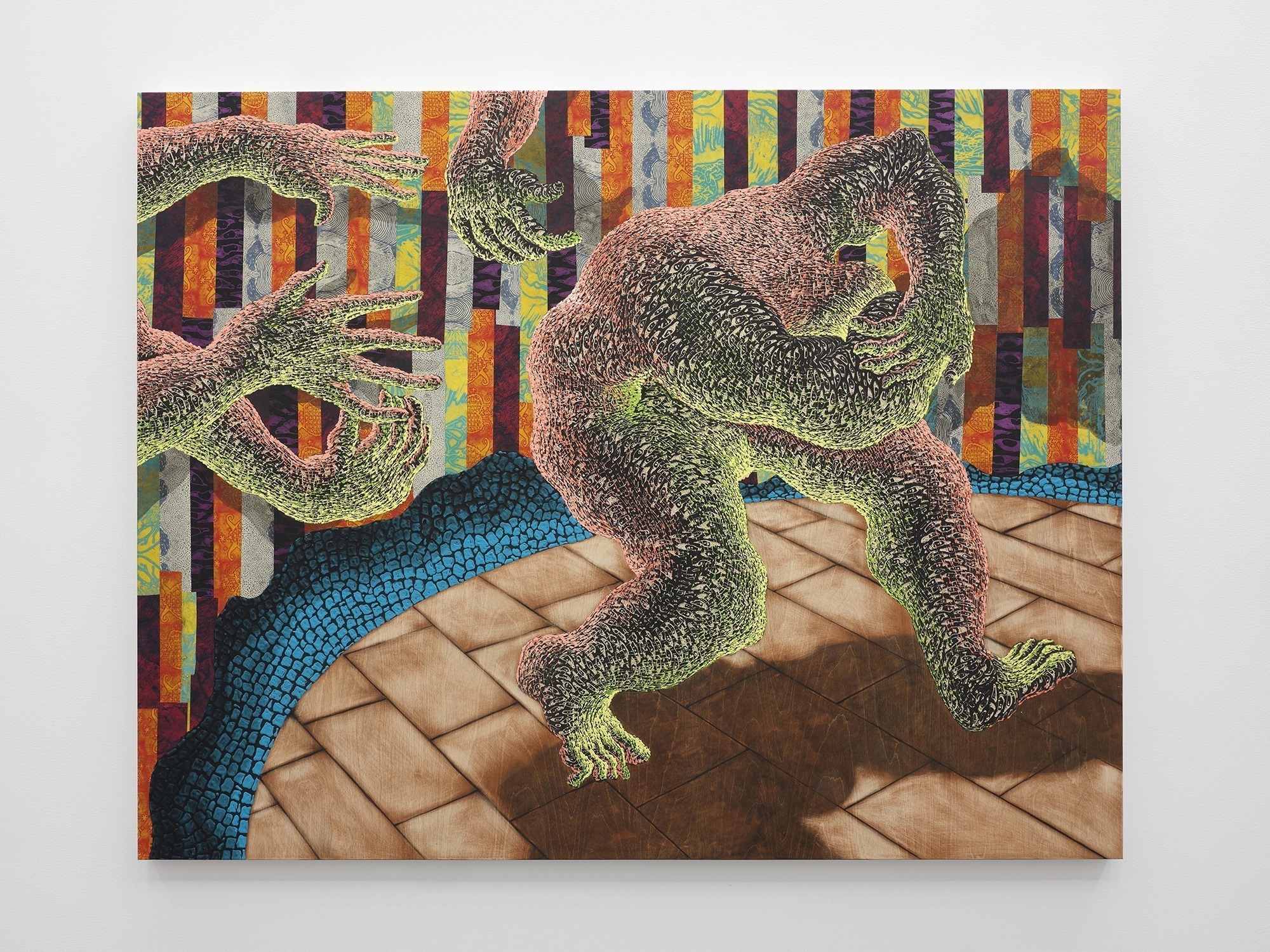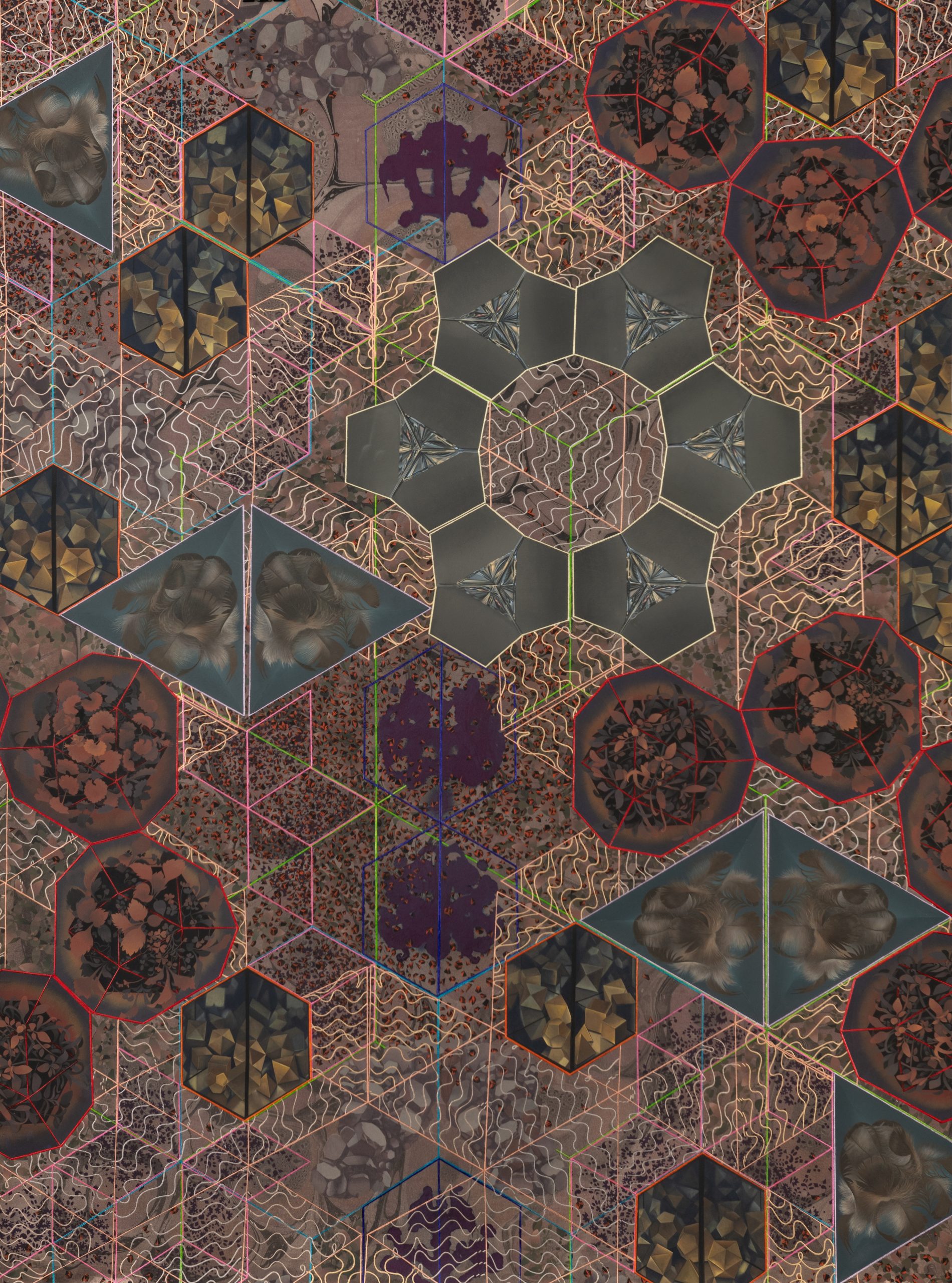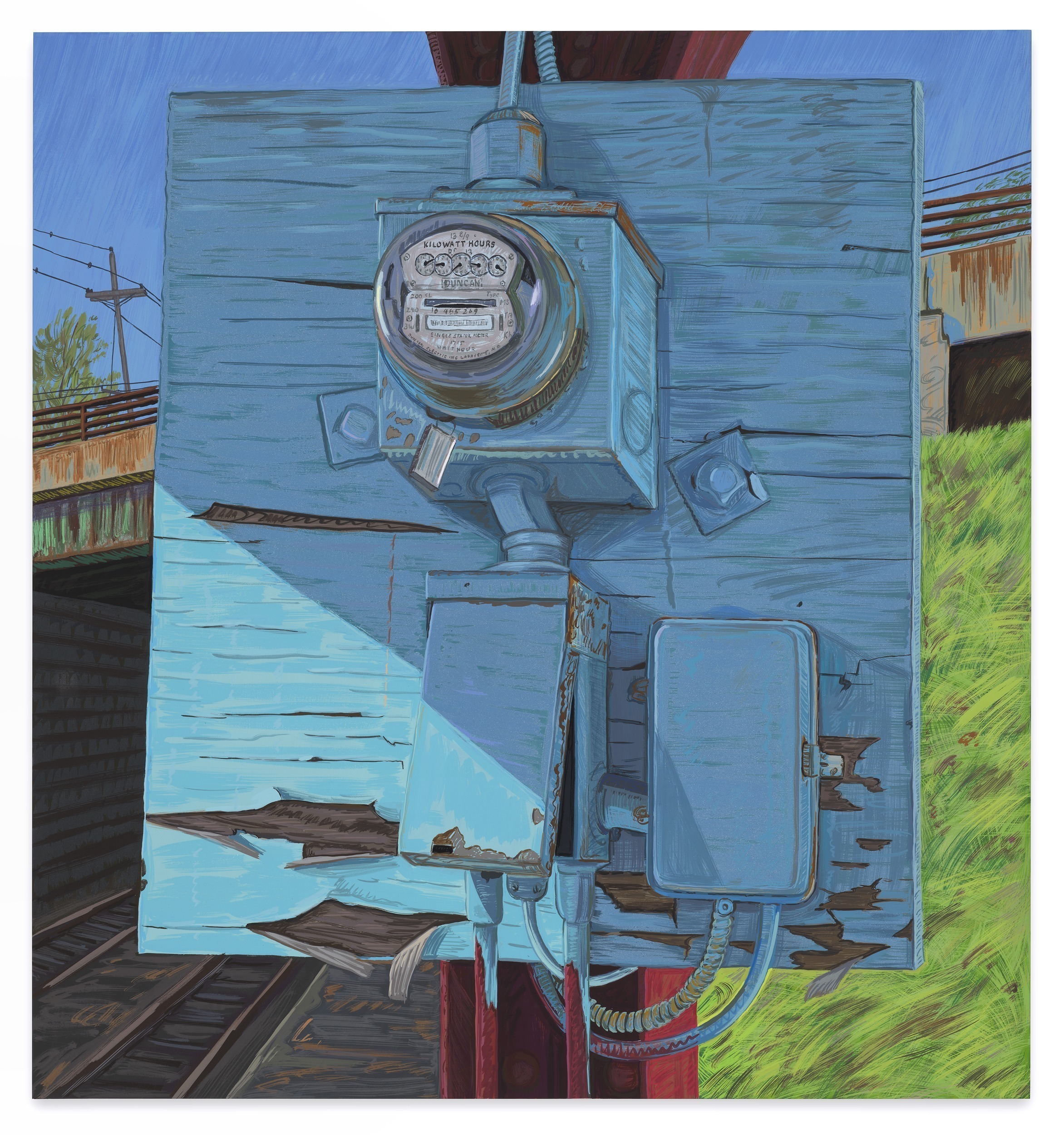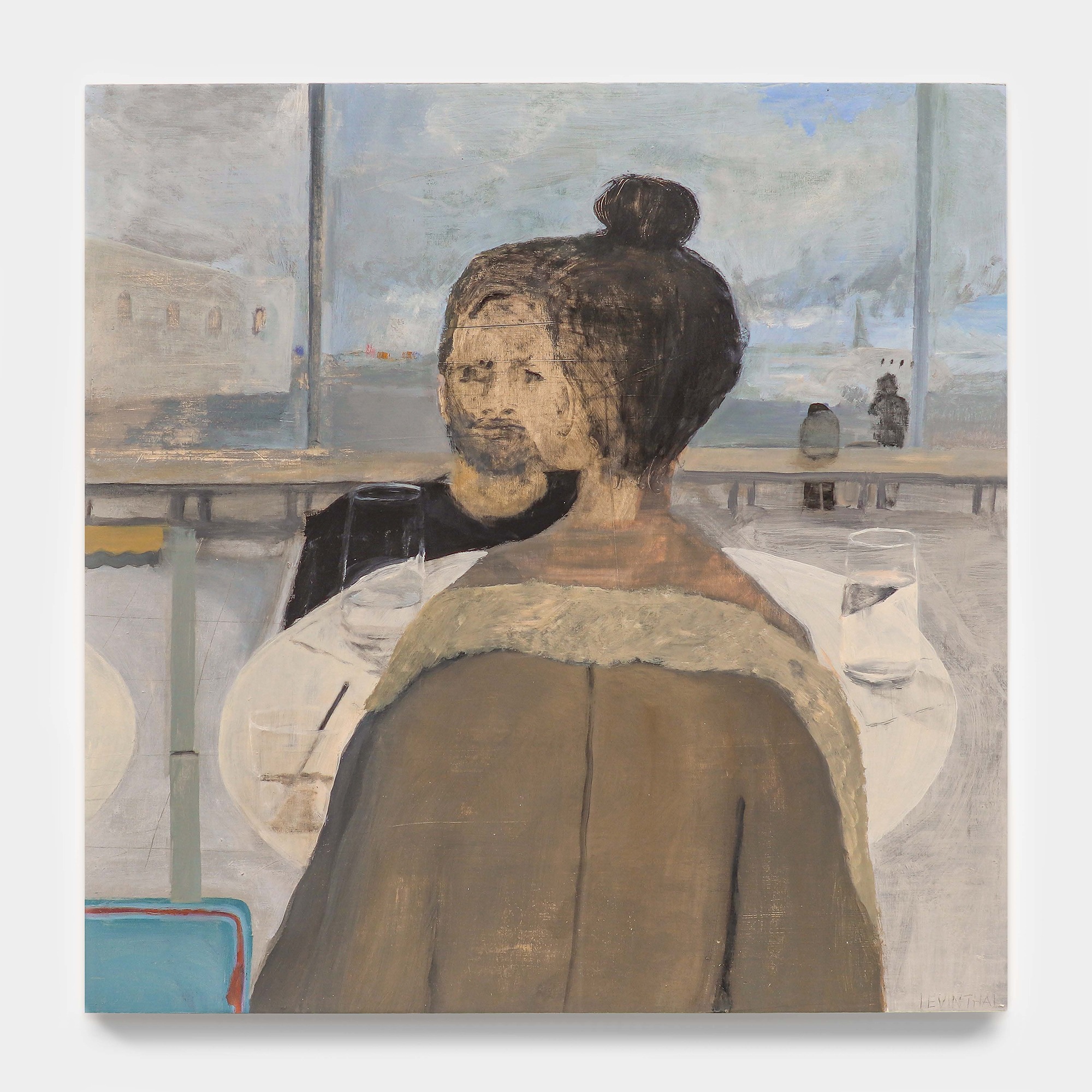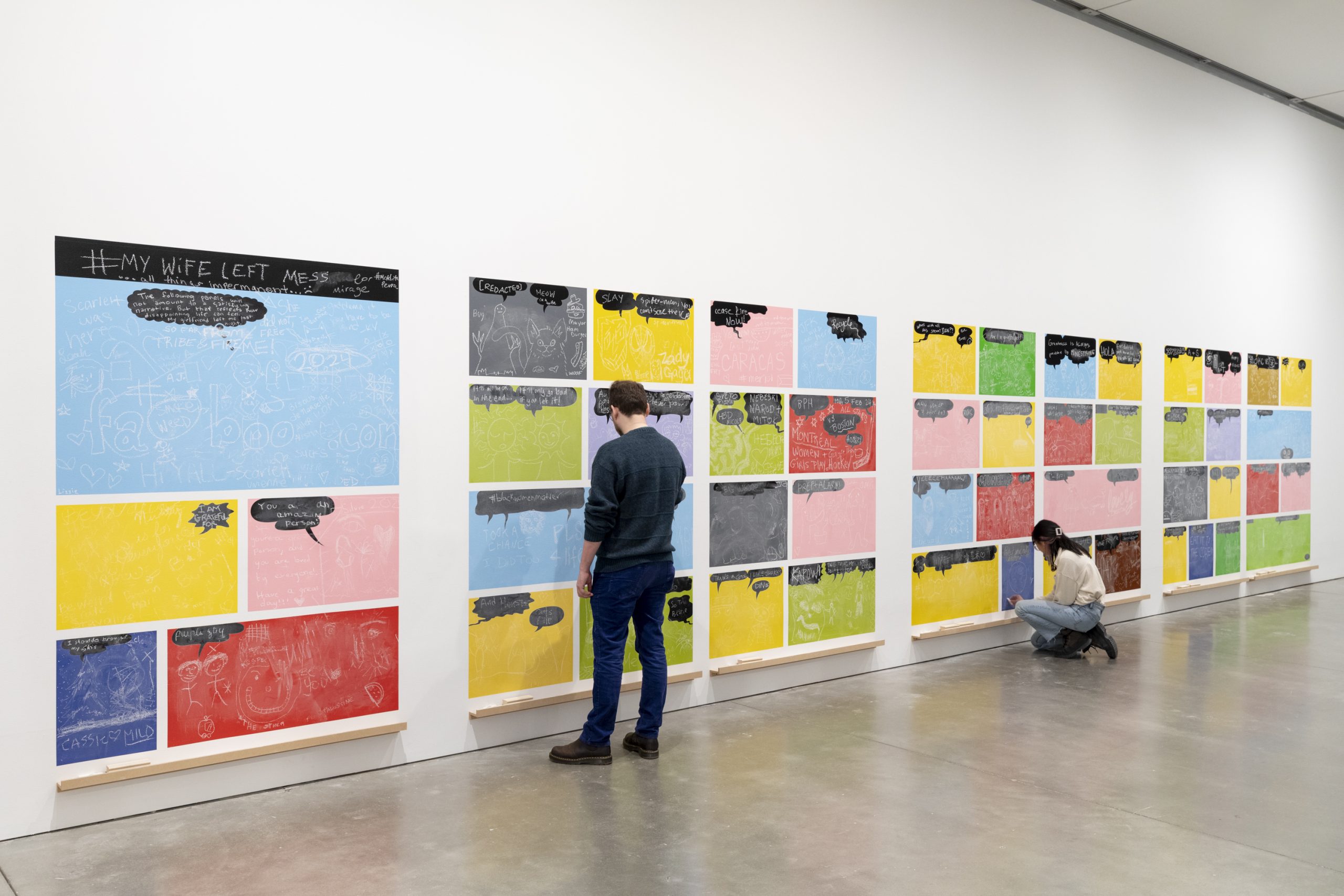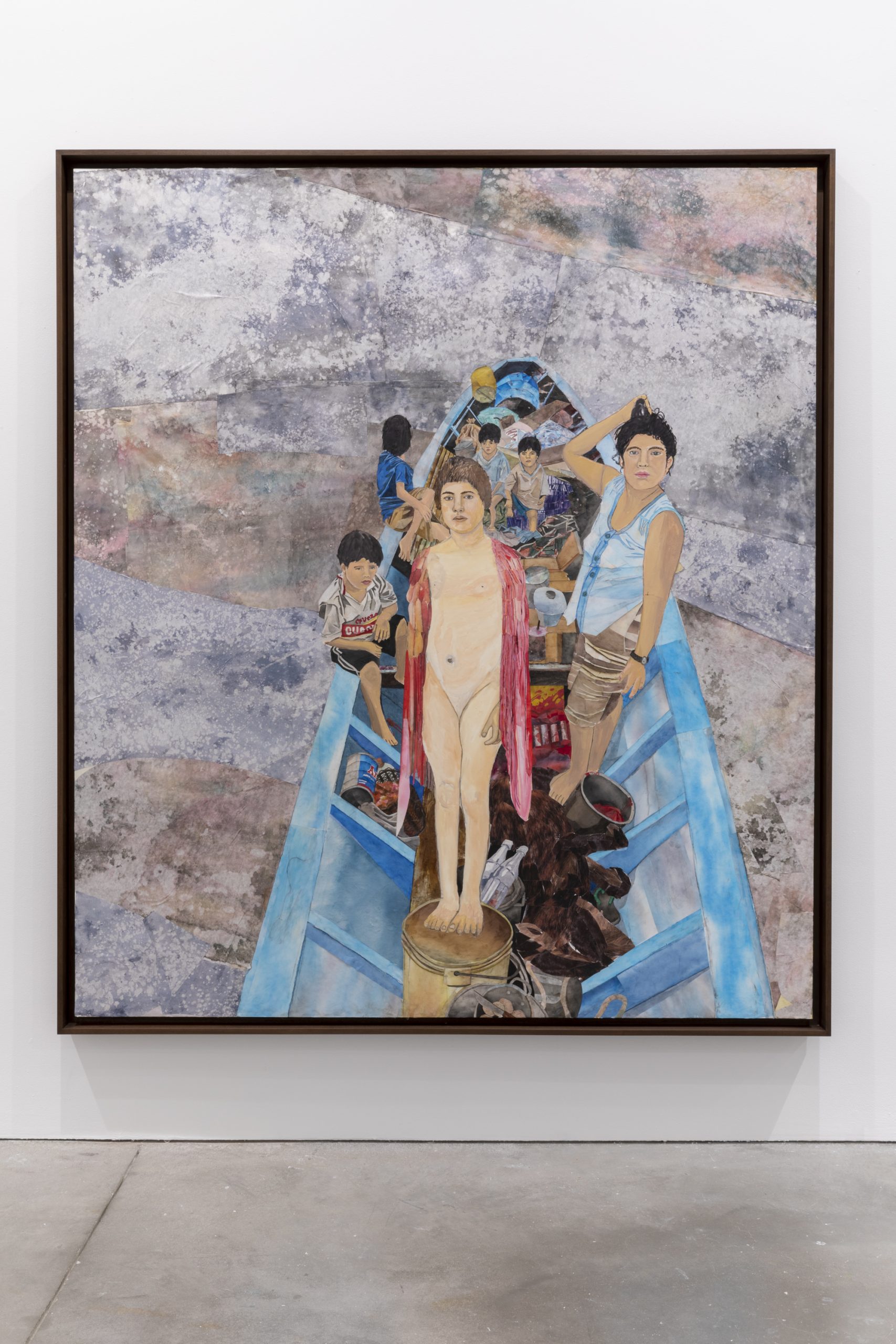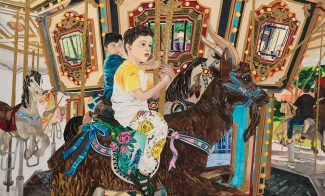In her monumental paintings, sculptures, and installations, Firelei Báez (Born 1981 in Santiago De Los Caballeros, Dominican Republic) creates fictional worlds that explore legacies of colonial rule across the Americas, the African diaspora, the Caribbean, and far beyond. Her exuberant artworks contain complex and layered uses of pattern, decoration, and abstract gestures alongside symbols rooted in Afro-Caribbean cultures. Báez painted Tone tonal time (or an economy of care) on the occasion of her first North American survey, organized by the ICA/Boston in 2024.
The artist’s quintessential paintings overlay paint onto reproductions of colonial-era maps, architectural plans, and other archival documents. These layered works challenge our understanding of acknowledged power, suggest alternative histories, and create expansive narratives of renewal and recalibration. In Tone tonal time…, a figure rendered in energetically layered paint merges with a finely detailed tableau of flora and glass. Drawing from her extensive art historical training, Báez engages with the traditions of still life vanitas paintings from the sixteenth- and seventeenth-century Dutch Golden Age of painting, and often contain animals, flowers, insects, rotting food, and skulls to convey the moral message that earthly life is transient and finite. While vanitas paintings consider death as their primary subject, Báez’s Dutch flowers and Murano glass—both symbols of global trade—center beauty and enduring life. A reproduction of a seventeenth-century Dutch maritime map provides the ground of Báez’s painting. While charming at first glance with its cherublike figures, such maps were frequently used by colonizers to expand into Africa and the Americas. Báez acknowledges this history while her painting imagines an alternative rendering focusing on an expansive femme subject who contains an entire galaxy of color. Ultimately, Báez’s intervention is not one of obliteration, but rather one of reimagining a past, present, and future that foregrounds beauty and belonging.

